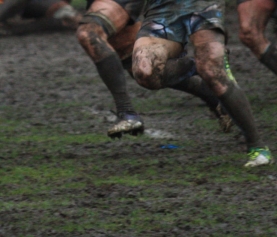
Long term planning for sport facilities and turf surfaces
With increasing demands on sporting facilities on a daily basis, effective planning is more important than ever to manage daily or short-term demands.
Scheduling of essential maintenance practices around events and seasonal changes requires the development of annual management plans that can be communicated to management, staff and sporting groups so that there is a clear understanding of everyone’s needs.
But what about the bigger picture?
Working in and around sporting environments, we hear the term ‘game plan’ used a lot. Every team (successful ones at least) look to capitalise on their strengths and exploit opposition weaknesses on game day. The spin off from this is that every team is looking to eliminate their weaknesses, by addressing them through training or investing in recruiting. Hence the cycle of continuous improvement.
The same principles can apply to our turf facilities. Every golf course, sports field, bowling green or tennis court has its strengths; the things that appeal to those who use it. Conversely, they all have their weaknesses; issues that show up every year around the same time.
They may have been acceptable once, but no longer is that always the case.
Just like our sports teams, the development of a game plan to address these weaknesses is critical if our turf facilities are to continue improving and meeting modern expectations.
Some of my favourite presentations to deliver at conferences are around long-term planning in golf clubs, sporting facilities and other turf surfaces managed by local governments or private enterprise. For every successful long-term plan regarding turf surfaces, there are three key elements that must be addressed:
Vision
Having a clear understanding of the long term goal helps to maintain focus, to give everything purpose. An example could be to have a free-draining oval that is capable of hosting sports events throughout the year without risk of closure.
Strategic Plan
Once we know what we are looking to achieve in the long term, we are able to identify the issues that are stopping us from achieving that goal, and set about a prioritising their correction. This may mean changing management practices, or investing in some new infrastructure to improve drainage, just like the sports team adjusts training or invests in recruiting.
Business Plan
At the end of the day, turf managers need to know how much it is going to cost to implement plans, so the development of a business plan helps to identify what can be afforded over a given time frame. This may require the implementation of some cultural practices to help improve drainage for a few years before a significant sub-surface drainage system can be invested in, or the construction of a new sand profile.
Having a clear and documented vision, strategic plan and business plan for turf facilities helps in a variety of ways, not least because it promotes consistent and efficient decision making, which is especially important in an environment governed by committees that are prone to regular turnover.
In short, it helps to promote consistency in an inconsistent world of boards and committees.
Having these plans written down and working towards them in a manner that can be sustained can result in some significant improvements in a relatively short time, but importantly, can help to prevent a cycle of poor (if well-intended) decision making that sees the same problems reoccurring year after year.
Effective planning can be a real game changer, but to be effective, plans have to be based on facts rather than opinions.
Taking the time to get the right advice and information can prove invaluable as it leads to better decision making for the long term.
Image// cappi thomas






